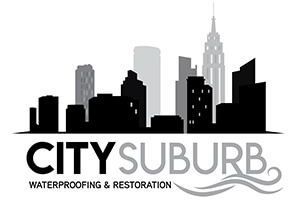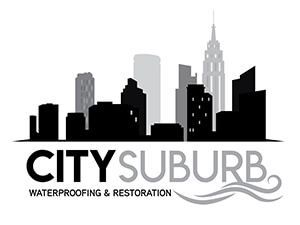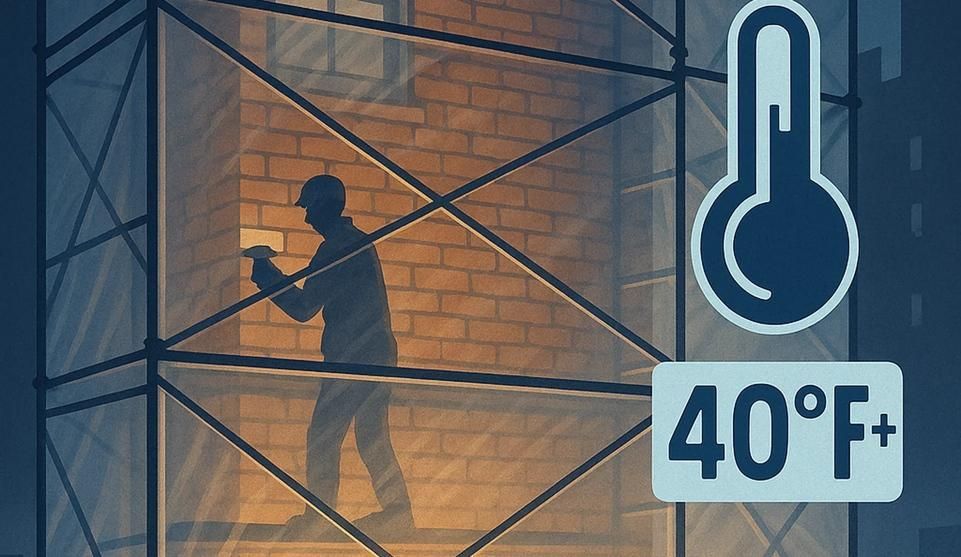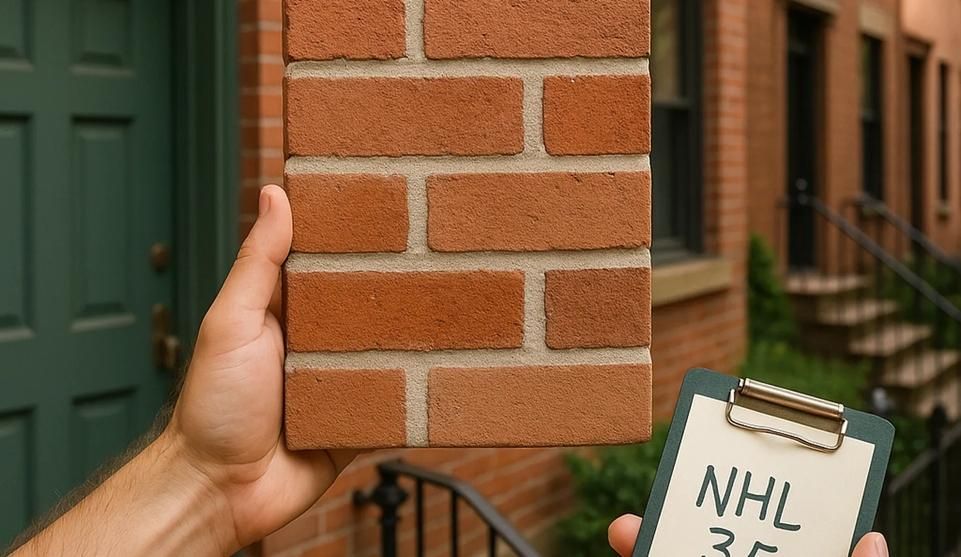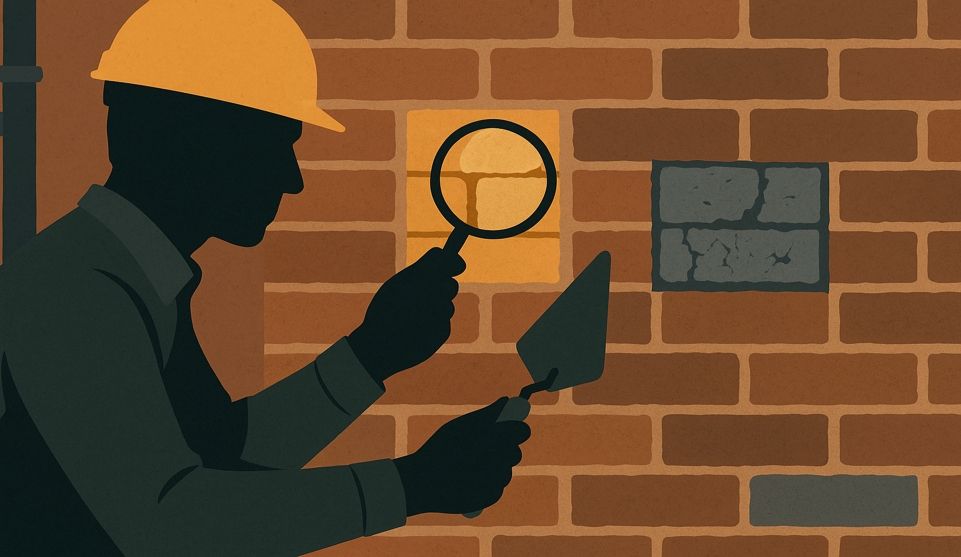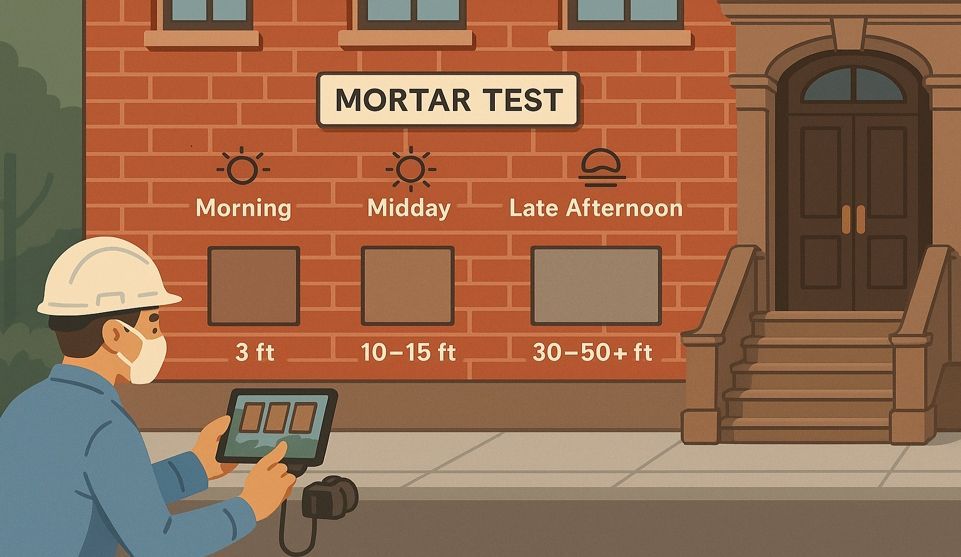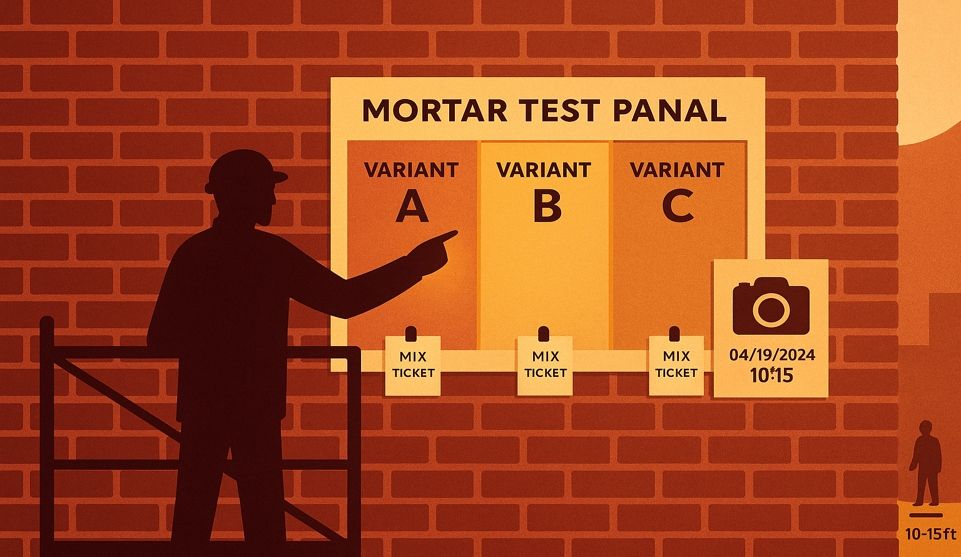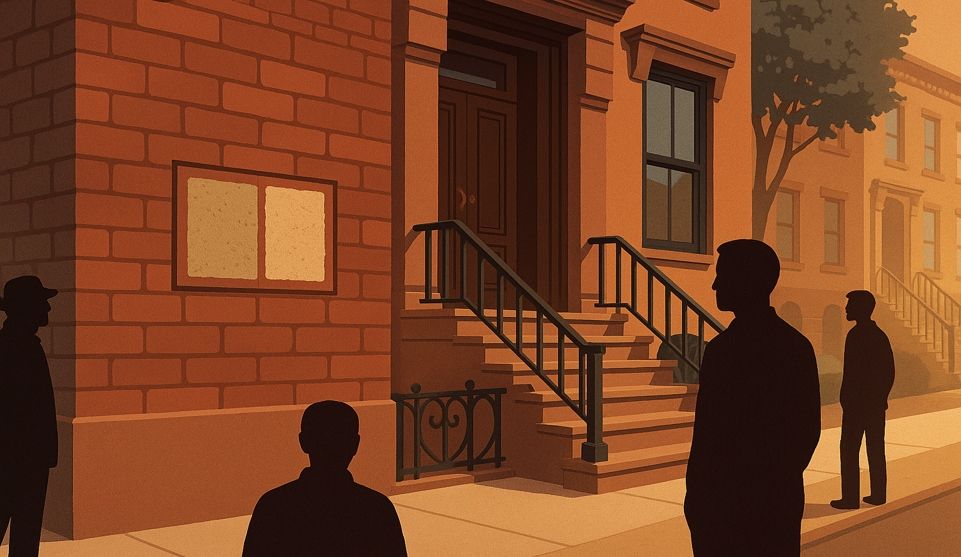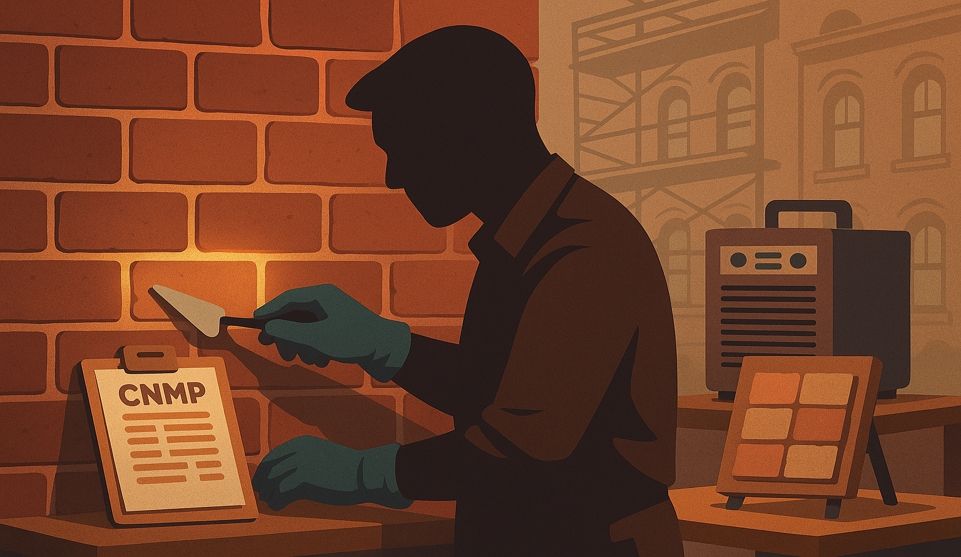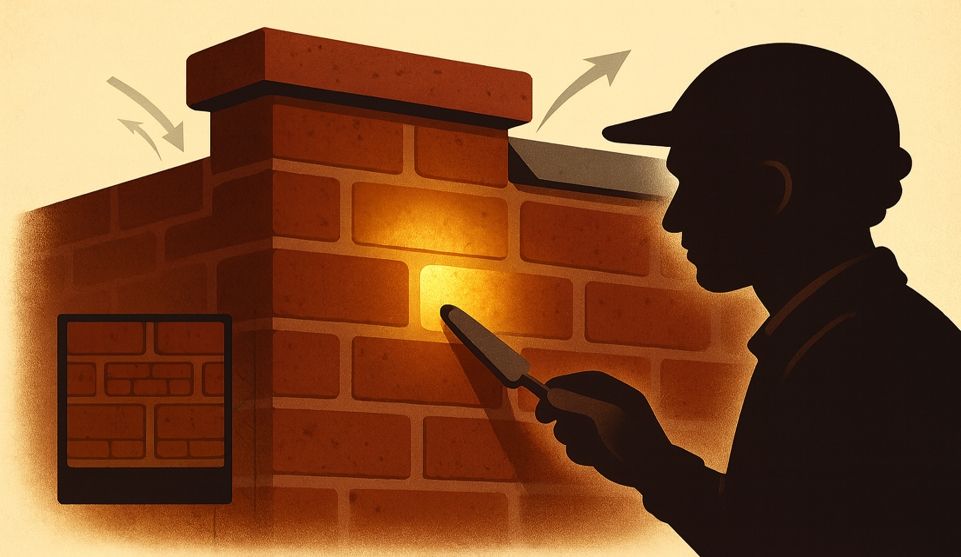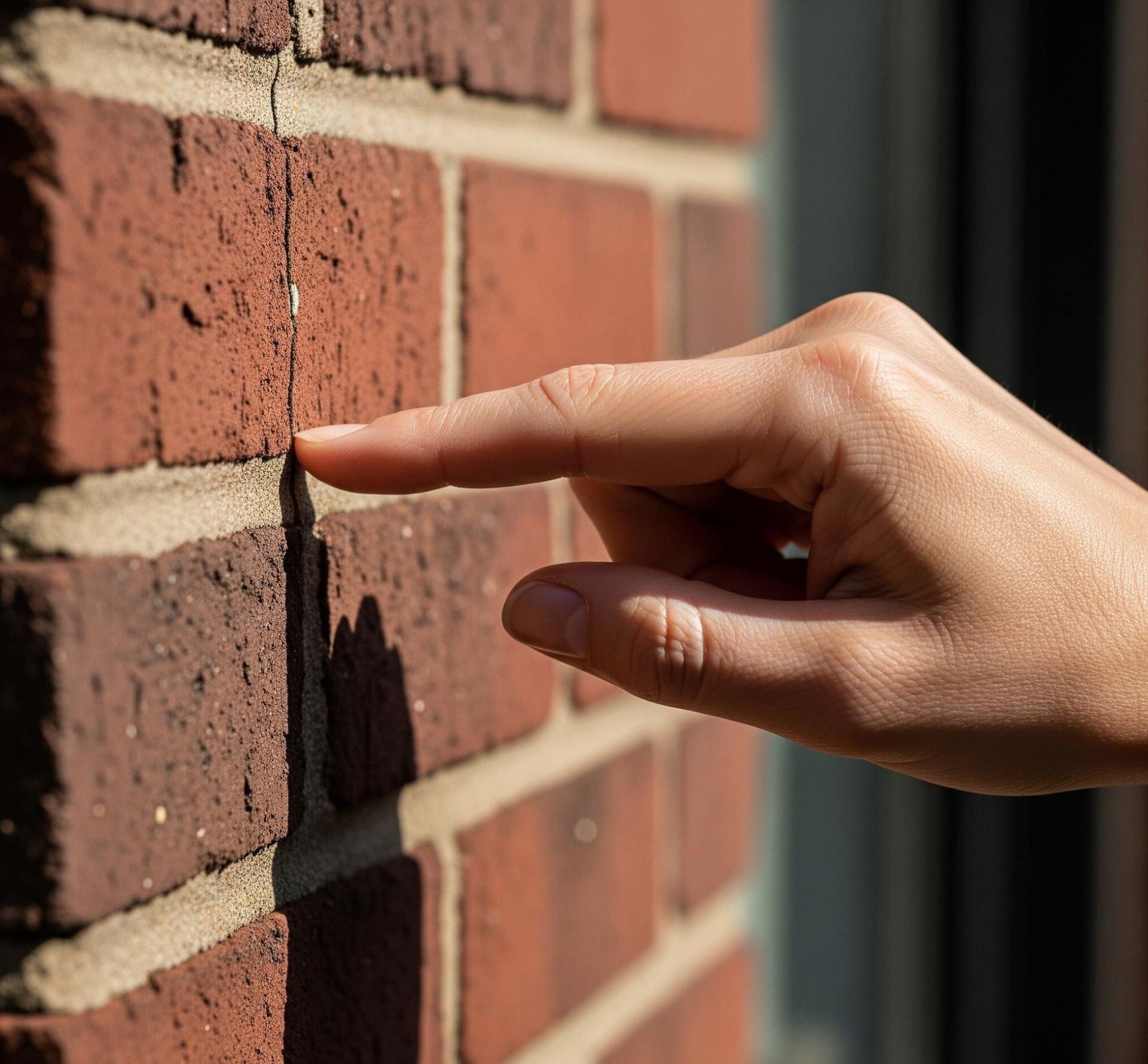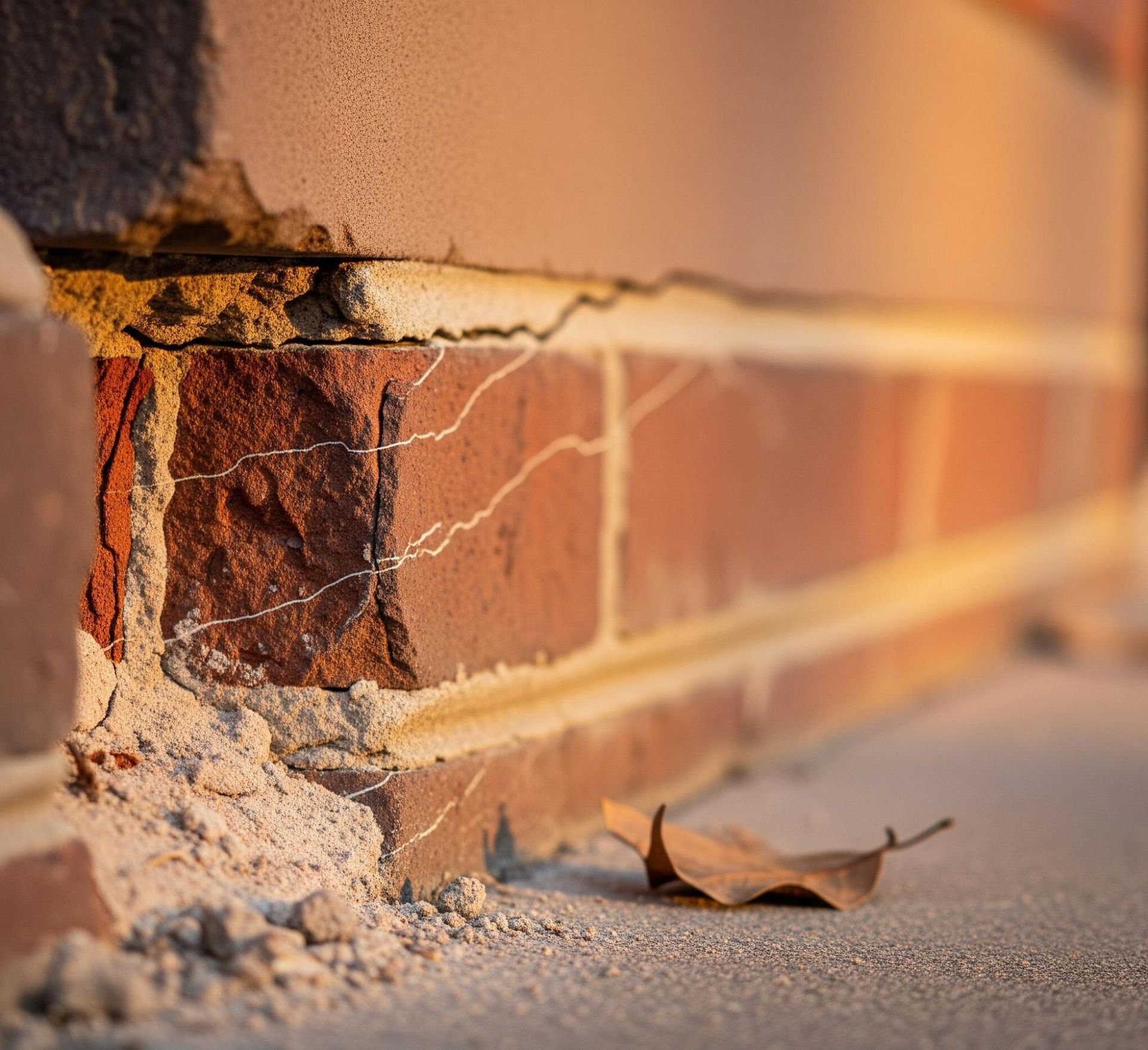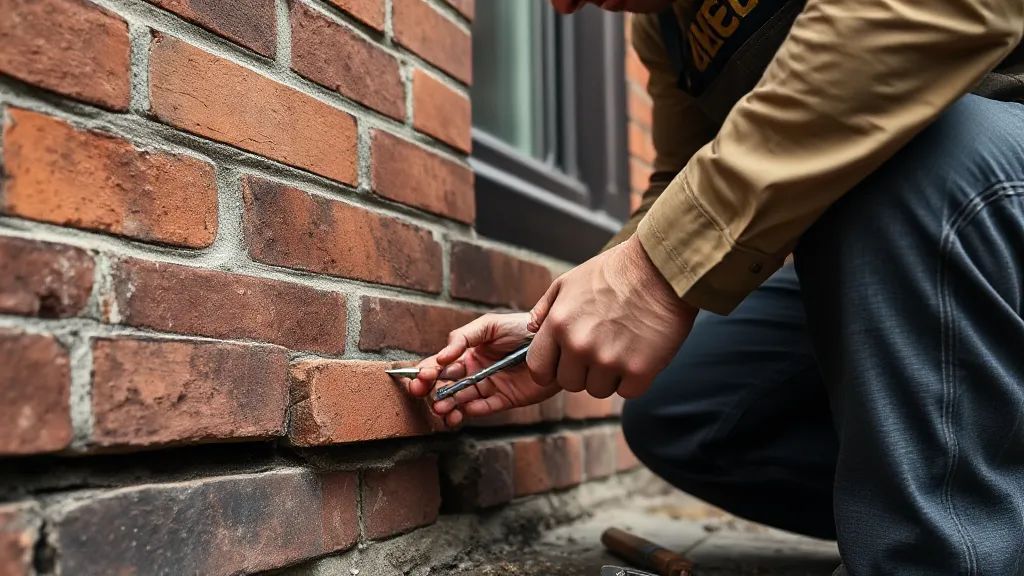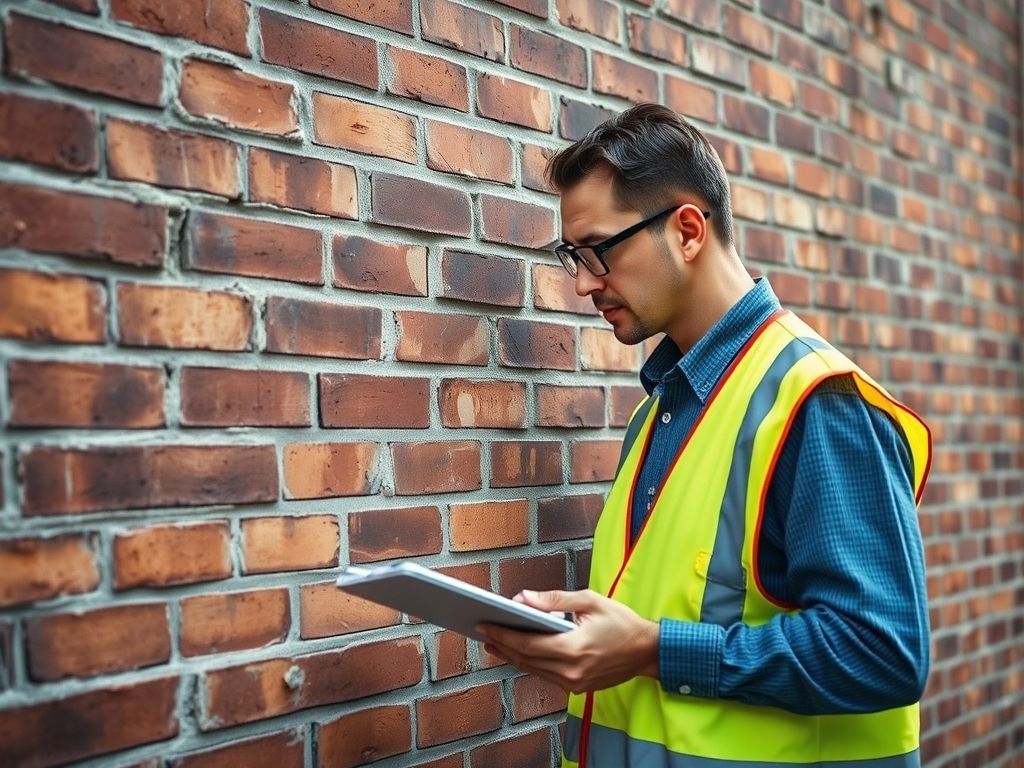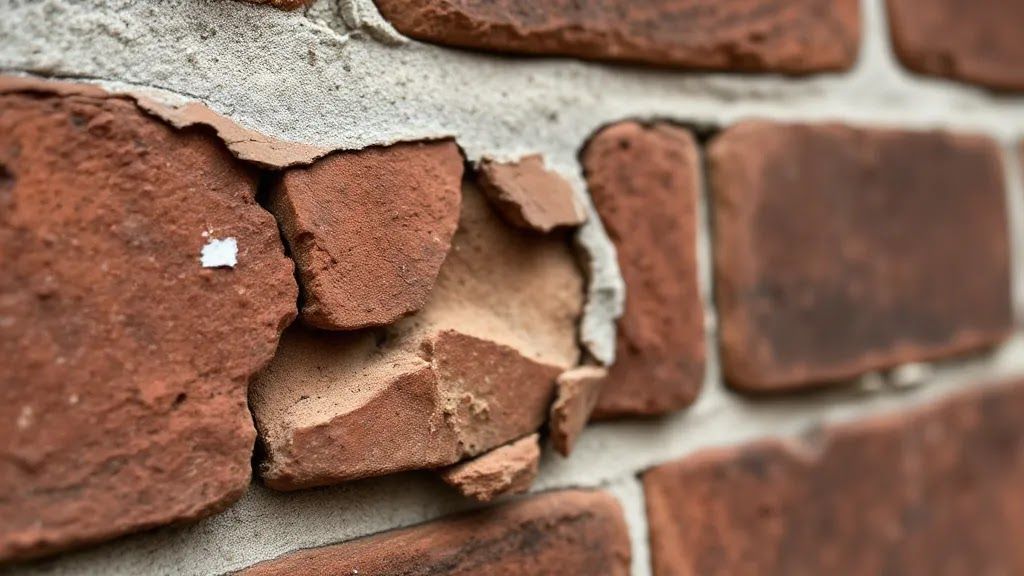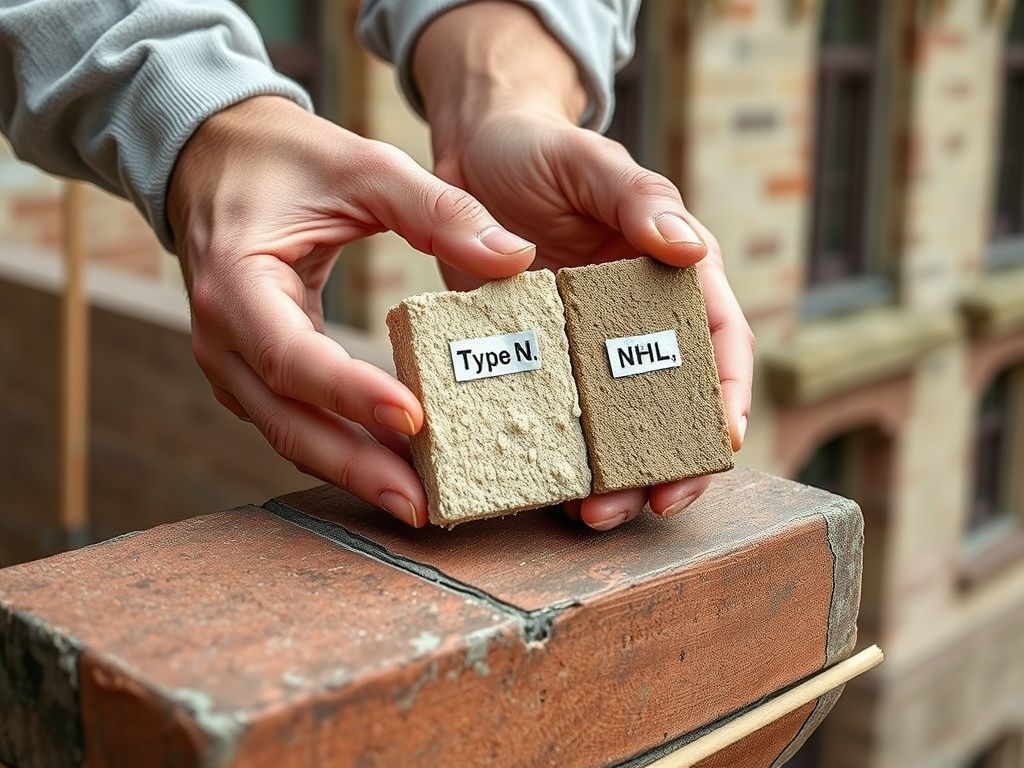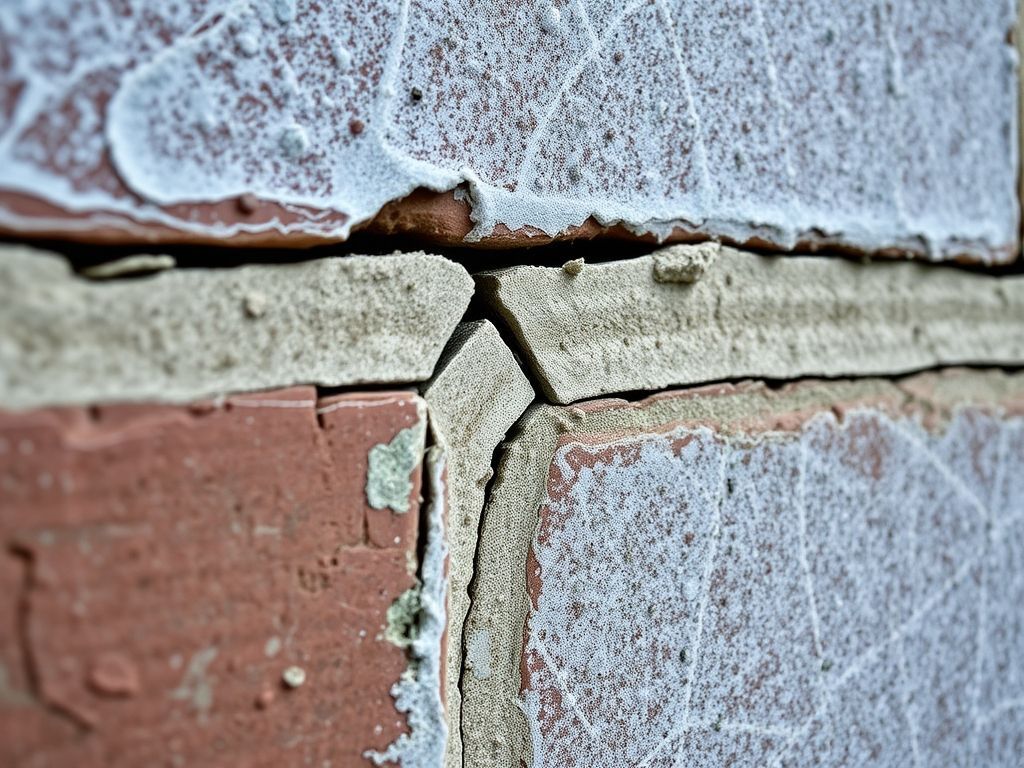Protecting Tenants and Pedestrians: A Framework for Scaffolding and Site Safety During Facade Repair
📌 Key Takeaways:
Protect people and reputation by running façade work through a documented, auditable safety system—not ad-hoc decisions.
Safety = Asset Protection: Treat the site safety plan as a capital-value safeguard that reduces legal exposure and builds trust with tenants and stakeholders.
Protect the Right-of-Way: Maintain safe, passable sidewalks with sidewalk sheds, debris netting, consistent lighting, and clear wayfinding throughout every work phase.
Own the Tenant Narrative: Prevent complaints by setting expectations early, issuing regular updates, routing questions to one empowered contact, and logging issues to resolution.
Lock Down the Site: Control perimeters, secure equipment after hours, restrict ladder access, and define incident-escalation steps to prevent unauthorized entry and loss.
Plan the Work—and the What-Ifs: Pre-define stabilize-notify-repair workflows for weather damage or debris claims so responses are calm, fast, and documented.
Document. Communicate. Secure. That’s how façade work protects people and reputation.
By the City Suburb Insights Team
Plans prevent problems.
The conference room falls quiet. A property manager and building owner review a façade report while imagining sidewalk sheds, noise complaints, and a crowded public right-of-way in Brooklyn. Phones buzz. Tenants are already asking what this means for their deliveries and daylight.
Here’s the immediate worry: How will a necessary façade repair affect tenants and the public—and what happens if something goes wrong? That’s a fair question in a dense urban environment. The answer is a clear, defensible site safety plan that reduces risk, minimizes disruption, and protects reputation.
Picture the destination. A covered walkway is well lit. Clear signage handles foot traffic. Tenants know exactly what to expect and who to contact. Complaints stay low because expectations are managed, not improvised. That’s the outcome this framework is built to deliver.
“An effective site safety plan is the most important tool for protecting your two most valuable assets: your tenants and your reputation.”
Key Terminology
- Scaffolding (Sidewalk Shed): A temporary structure that protects the public and facilitates work at height during exterior repairs in dense streetscapes.
- Site Safety Plan: A documented method for protecting the public, coordinating with tenants, and controlling site access throughout the project.
- Public Right-of-Way: Sidewalks and other public paths that must remain safe and passable during construction.
More Than Scaffolding: Why Your Safety Plan Protects Asset Value
A defensible site safety plan is not just a compliance document; it’s an asset-protection tool. In practice, strong planning reduces incident exposure, accelerates approvals, and demonstrates a building’s professional stewardship to tenants, neighbors, and regulators. In the field, a recurring pattern is clear: when the plan is specific—and communicated early—complaints drop and reputational risk declines. That’s not an accident; it’s design.
Real-talk: look, this is where many managers get tripped up—assuming the sidewalk shed is the plan. It isn’t. The shed is one control among many. The plan is the system that ties controls, communication, and access together so the project runs cleanly.
The 3-Pillar Framework for a Defensible Site Safety Plan
Direct Answer: A defensible plan for façade work in Brooklyn rests on three pillars—Pedestrian & Public Protection, Proactive Tenant Communication, and Comprehensive Site Security—executed as a documented, auditable method that aligns field practices with regulations and expectations.
Pillar 1: Pedestrian and Public Protection
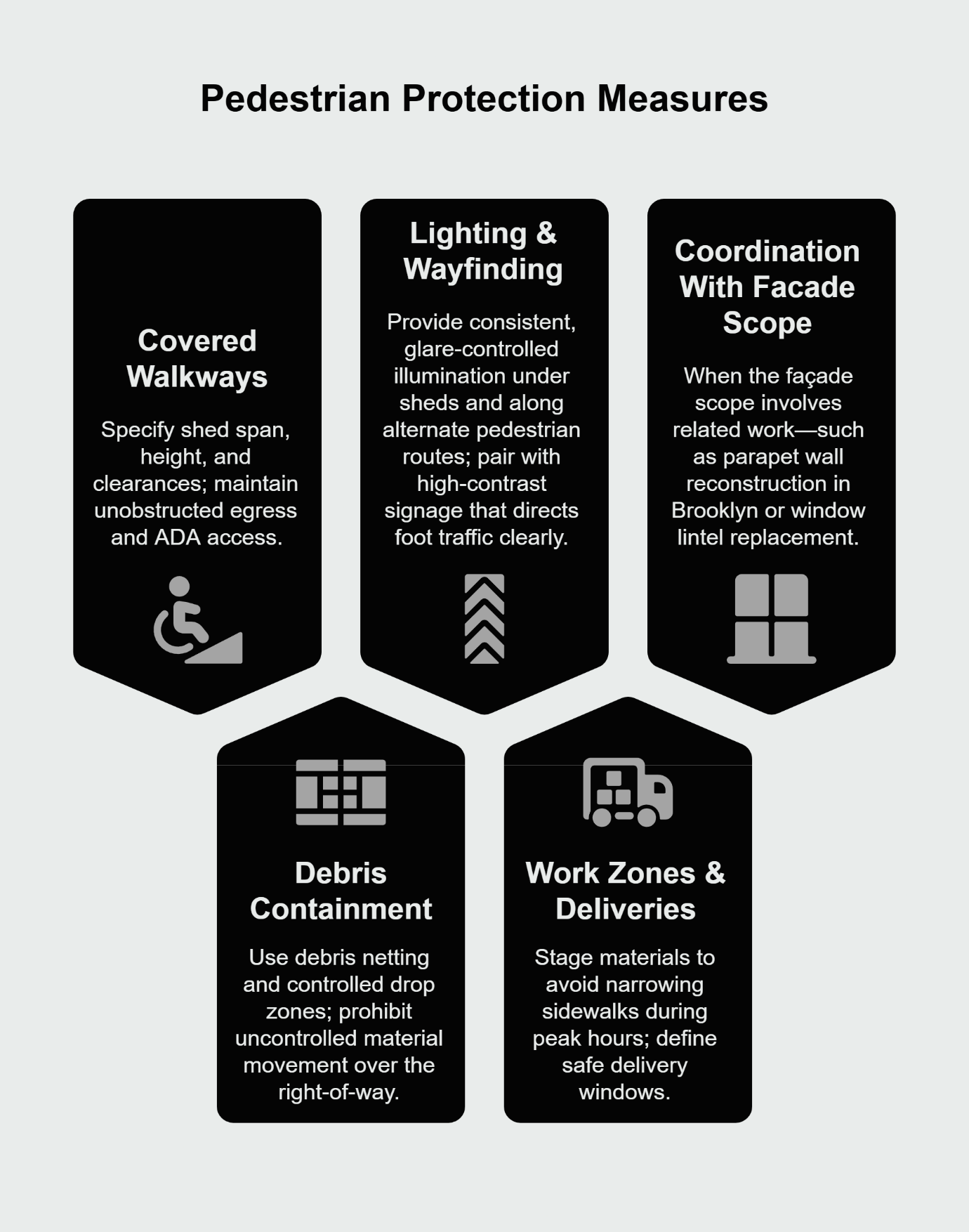
The purpose here is simple: keep the public safe and keep sidewalks moving while enabling efficient work.
Covered Walkways (Sidewalk Sheds): Specify shed span, height, and clearances; maintain unobstructed egress and ADA access. Align details with NYC Department of Buildings guidance on sidewalk sheds (authoritative references and permitting apply; see NYC DOB resources for current requirements).
- Authoritative resource: NYC Department of Buildings—Sidewalk Sheds (regulatory guidance and permit information).
- Debris Containment: Use debris netting and controlled drop zones; prohibit uncontrolled material movement over the right-of-way.
- Lighting & Wayfinding: Provide consistent, glare-controlled illumination under sheds and along alternate pedestrian routes; pair with high-contrast signage that directs foot traffic clearly.
- Work Zones & Deliveries: Stage materials to avoid narrowing sidewalks during peak hours; define safe delivery windows.
- Coordination With Facade Scope: When the façade scope involves related work—such as parapet wall reconstruction in Brooklyn or window lintel replacement.
General principle (widely accepted): OSHA standards governing scaffold systems emphasize fall protection, load capacity, and safe access; these principles inform safer site design and monitoring. For foundational safety context, see OSHA’s scaffold guidance (29 CFR 1926 Subpart L).
Pillar 2: Proactive Tenant Communication
Expectation gaps create most complaints. A professional program replaces surprises with schedules.
- Initial Briefing: Send a clear pre-start notice detailing dates, phases, noise windows, sidewalk changes, and contact channels.
- Regular Updates: Share a predictable cadence (e.g., weekly) for progress and upcoming impacts.
- Designated Contact: Route questions to a single, responsive contact with authority to resolve issues fast.
- Issue Logging: Track and close tenant concerns; summarize resolutions in update memos to build trust.
Why it works: it sets expectations, lists predictable impacts, and clarifies the contact path. That reduces escalation and, over time, demonstrates control.
For scope education that helps set those expectations, consider linking tenants to context pieces such as Why a “Patch Job” Can Be the Most Expensive Repair of All or A Guide to Preserving History: The Principles of Historic Masonry Restoration when appropriate for commercial audiences.
Pillar 3: Comprehensive Site Security
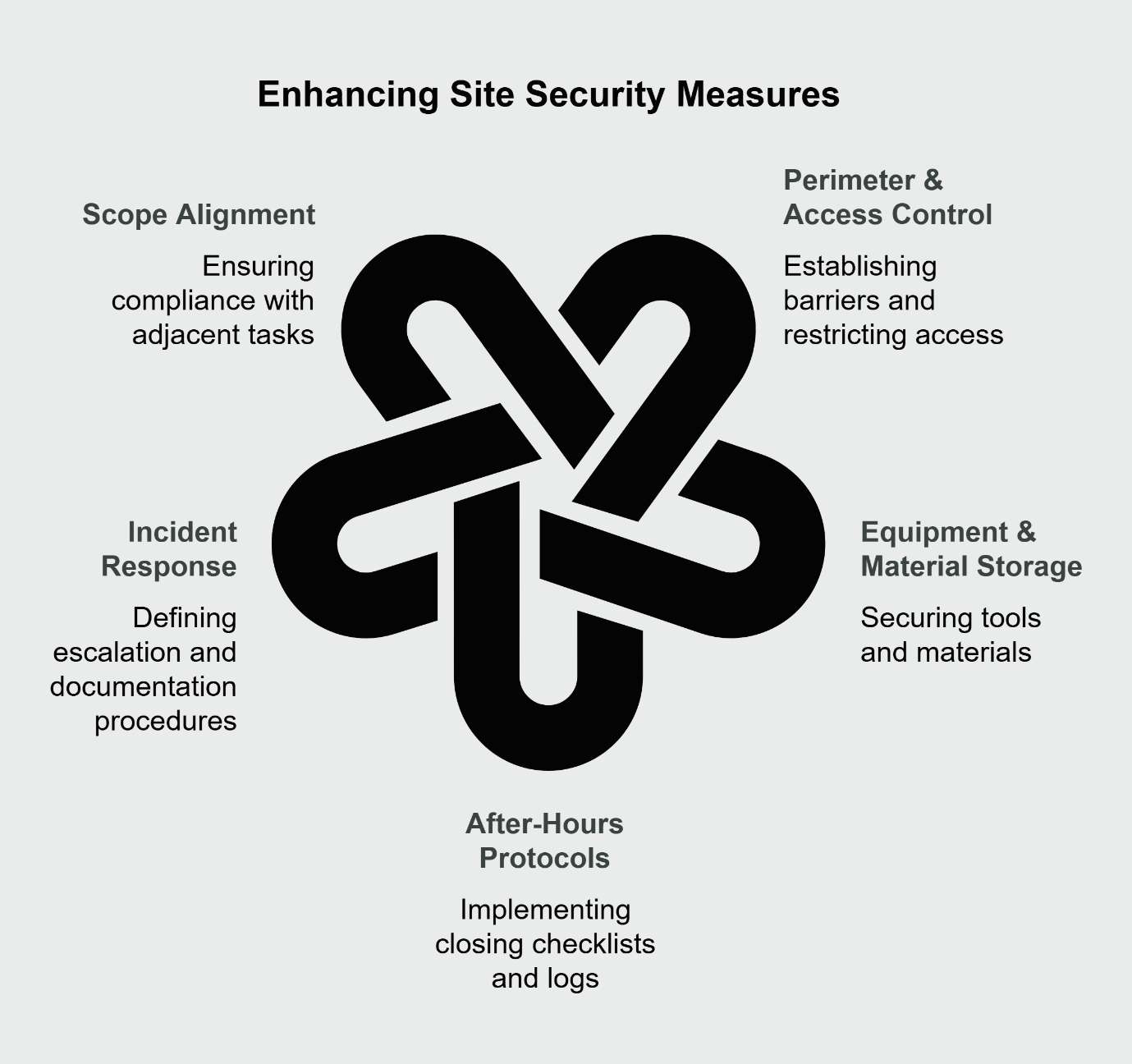
Security prevents unauthorized access and protects equipment—particularly after hours.
- Perimeter & Access Control: Establish barriers and lockable gates around material zones; restrict ladder access when crews are off-site.
- Equipment & Material Storage: Use lockable boxes and secure tie-offs; remove portable power tools after shift.
- After-Hours Protocols: Assign a closing checklist (perimeter check, signage, lighting, gate locks) and log completion daily.
- Incident Response: Define how to escalate, who to call, and what to document.
- Scope Alignment: When site work supports adjacent tasks like Brick Pointing in Brooklyn, ensure materials (mortar, water, grinders) are stored and powered down in compliance with building policies.
Helpful resource: OSHA’s scaffold and site-control principles outline consistent access, load, and fall-protection requirements that support these controls (general guidance; project specifics vary).
Liability & Asset Value
Owners evaluate risk in two buckets—legal exposure and reputation—both of which flow into capital value over time. A documented, consistently executed plan shows duty of care and predictability to insurers and tenants alike. It is often the difference between a project tenants tolerate and one they praise (or pan).
One nuance matters: faster is not always better—safe is. An accelerated schedule that increases exposure at the right-of-way can backfire; the better signal to the market is visible order and clean execution.
Technical Note
This framework is aligned with established safety and compliance principles and should be coordinated with NYC Department of Buildings guidance on sidewalk sheds and façade safety, and with the Façade Inspection & Safety Program (Local Law 11/FISP) where applicable. Requirements evolve; consult current NYC DOB resources for permitting and protective measures, and coordinate with your engineer of record.
- NYC DOB—Sidewalk Sheds (guidance & permitting)
- NYC DOB—FISP / Local Law 11 (program requirements and cycles)
- OSHA—Scaffolds, 29 CFR 1926 Subpart L (general safety principles)
What If…? Planning for Unexpected Site Safety Challenges
Direct Answer: Anticipating credible risks—and pre-defining the response—keeps control and confidence high.
Scenario A: Severe weather damages the shed or netting.
1. Stabilize & secure: Halt overhead work, cordon affected zones, and deploy temporary controls (cones, caution tape, emergency lighting).
2 Notify & document: Alert tenants and the DOB/engineer as appropriate; log photos, timing, and interim controls.
3. Repair & reopen: Prioritize emergency repairs and re-inspection before resuming overhead work; issue a status update with next steps.
Scenario B: A tenant claims debris-related property damage.
1. Acknowledge & log: Record time, location, description, and photos; preserve any physical evidence.
2. Inspect & mitigate: Verify containment measures (netting, drop zones) and adjust immediately if gaps exist.
3.Communicate resolution path: Explain investigation steps and expected timeline; follow up with a written outcome.
Note on certainty: These steps reflect generally accepted incident-response practices for commercial exterior work. Exact procedures should be tailored by project teams, contracts, and local regulations.
An Analogy That Clarifies the Plan
Think of the site safety plan like air-traffic control for a busy runway. Pilots, ground crew, and the tower follow a checklist to keep aircraft moving safely in a confined space. The larger the volume, the more the checklist matters—almost always—actually, always. It’s that central to order.
Turning a Liability Into a Sign of Professionalism
Executed properly, the three pillars do more than prevent incidents; they signal professionalism. Tenants see clean pathways, predictable schedules, and responsive updates. The public sees a site that respects the sidewalk as much as the scaffolding. And leadership sees a manager running a controlled process—not just a repair.
There’s a career arc here, too. The same disciplines—documented controls, clear communications, measured risk—are the foundation for portfolio-level roles. Today’s façade project becomes tomorrow’s playbook across multiple assets, where capital plans and reputational resilience are built on evidence, not assurances.
This article provides general information about scaffolding and site safety for educational purposes. Individual circumstances vary significantly based on factors like local regulations, building location, tenant communication plan, and scaffolding type. For personalized guidance tailored to ensuring site safety during facade repairs, it is recommended to consult with a qualified professional.
Ready to See Safe, Clean Jobsites in Action? Explore Our Project Gallery.
Our Editorial Process
Our expert team uses AI tools to help organize and structure our initial drafts. Every piece is then extensively rewritten, fact-checked, and enriched with first-hand insights and experiences by expert humans on our Insights Team to ensure accuracy and clarity.
By the City Suburb Insights Team
The City Suburb Insights Team is our dedicated engine for synthesizing complex topics into clear, helpful guides. While our content is thoroughly reviewed for clarity and accuracy, it is for informational purposes and should not replace professional advice.
